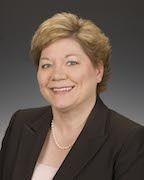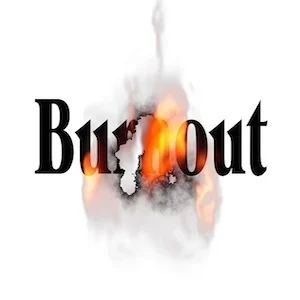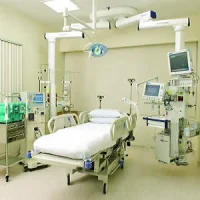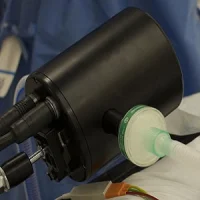When over half of critical care health professionals experience burnout syndrome, it is time to act, says the Critical Care Societies Collaborative (CCSC) in the United States.
The call to action on burnout syndrome (BOS) outlines risk factors and diagnostic criteria for BOS, prevalence, causes and consequences, and urges stakeholders to help mitigate BOS and its consequences, both for critical care health professionals and for patients. It also discusses potential interventions that may be used to prevent and treat BOS. There are recommendations for individuals, ICU leaders, hospital administrators, funding agencies, professional societies, academic institutions, patient advocacy groups and policy makers.
The call to action is jointly published by the Critical Care Societies Collaborative in the United States, which comprises the American Association of Critical-Care Nurses, the American College of Chest Physicians (CHEST), the American Thoracic Society and the Society of Critical Care Medicine. The complete statement can be viewed in the official publication of each CCSC member journal (see References at end of page).
“Critical care health care professionals have an important voice and should be involved in promoting
their own wellness. Critical care health care professionals should be personally responsible for managing
their own BOS symptoms and related consequences,” say the authors.
“The CCSC will continue to working diligently to increase awareness, educate our community, enhance research opportunities, implement strategies that enhance job satisfaction, and improve the mental health of critical care health care professionals. Collectively, healthy ICU work environments need to be created that ultimately and, most importantly, improve patients’ quality of care,” they conclude.
"With more than 10,000 critical care physicians and 500,000 critical care nurses practising in the United States, the effects of burnout syndrome in the ICU cannot be ignored," said Dr. Curt Sessler, senior author and immediate past president of the American College of Chest Physicians in a statement.
"We believe that protecting the mental and physical health of health care professionals who are at risk for burnout syndrome is vitally important for not only the professionals but for all stakeholders, including our patients", added Sessler.
In an editorial in Chest, Stephen M. Pastores, MD, Department of Anesthesiology and Critical Care Medicine, Memorial Sloan Kettering Cancer Center, New York observes that the key element is for ICU practitioners not only to recognise the risk factors for BOS but also to know when to ask for help.
“In our ICU, critical care physicians, nurses, fellows, and advanced practice providers hold regular staff debriefings on challenging end of life cases with ethics and palliative care consultants, social workers, and patient representatives. Team building is fostered with weekend sporting events, holiday parties, meditation sessions, and midafternoon “tea time” breaks”, he writes.
ICU Management & Practice: Is there a tendency for health professionals experiencing burnout not to admit it or recognise it?
 Kleinpell: There is a tendency for healthcare professionals experiencing burnout not to admit or recognise it as some perceive they need to be stoic - and that admitting their feelings might be perceived as a sign of weakness. The Call to Action is intended to highlight the importance of preventing and addressing burnout in ICU healthcare professionals, and to bring recognition that burnout is common among members of high-stress professions. Burnout is commonly caused by emotional, mental and physical exhaustion related to excessive or prolonged stress, and we must increase awareness of the importance of recognizing and managing burnout. We are encouraging ICU healthcare providers to share how they are addressing burnout by joining the conversation at #StopICUBurnout.
Kleinpell: There is a tendency for healthcare professionals experiencing burnout not to admit or recognise it as some perceive they need to be stoic - and that admitting their feelings might be perceived as a sign of weakness. The Call to Action is intended to highlight the importance of preventing and addressing burnout in ICU healthcare professionals, and to bring recognition that burnout is common among members of high-stress professions. Burnout is commonly caused by emotional, mental and physical exhaustion related to excessive or prolonged stress, and we must increase awareness of the importance of recognizing and managing burnout. We are encouraging ICU healthcare providers to share how they are addressing burnout by joining the conversation at #StopICUBurnout.
 Good: Healthcare personnel go into this profession to care for others and we frequently forget that we need care ourselves. Some personnel see this as a sign of “weakness” and do not want to admit that they may need to engage in self-care or set personal and professional boundaries. This is one reason why the CCSC has issued a Call to Action for the profession as a whole and individually to bring attention to the importance of recognising and addressing burnout.
Good: Healthcare personnel go into this profession to care for others and we frequently forget that we need care ourselves. Some personnel see this as a sign of “weakness” and do not want to admit that they may need to engage in self-care or set personal and professional boundaries. This is one reason why the CCSC has issued a Call to Action for the profession as a whole and individually to bring attention to the importance of recognising and addressing burnout.
ICU Management & Practice: Is there a balance needed between system solutions for and individual actions on burnout syndrome?
Kleinpell: A balance is needed between system solutions to address prevention of burnout such as providing staff with adequate lunch and break times, and individual actions of the healthcare professional, such as taking advantage of workplace fitness facilities or other stress reduction measures. The demands of patient care in the ICU can be challenging and the fast-paced environment can lead to a stressful work environment. Having workplace measures in place such as yoga or fitness classes, providing access to a respite room, and ensuring adequate staff support measures such as debriefings after an emergency situation are very useful in providing stress relief and in balancing the fast-paced work environment in the ICU.
Good: Organisations and the overall healthcare system must provide an environment that is healthy and conducive to preventing burnout. The American Association of Critical-Care Nurses (AACN) advocates firmly that nurses must practise in healthy work environments and has been a leader by defining the key standards that must be in place in order to have such environments. Those standards include: skilled communication, true collaboration, authentic leadership, effective decision making, appropriate staffing and meaningful recognition. Additionally, we as individuals must take accountability to prevent burnout by practiding good self-care by taking breaks and vacation time, seeking assistance when needed, and taking care of our overall health and welfare.
ICU Management & Practice: What can the ICU director do to prevent burnout or to ensure individuals who experience burnout get help quickly?
Kleinpell: ICU directors can reinforce the importance of preventing and addressing burnout and make it a priority. The CCSC Call to Action can be used to promote awareness among ICU staff as well as to encourage staff to take advantage of workplace stress reduction measures.
Good: One of the first things ICU leaders must do is learn how to recognise when staff are experiencing burnout syndrome. Once recognised, then interventions should begin. Interventions will be based on the individual, as burnout is not “equal” across individuals. One person’s burnout may be related to lack of rest from the stressful environment, therefore a vacation or not working overtime might address those concerns. Another person’s experience may be related to feeling a lack of professional/personal accomplishment. This individual might respond to projects, going back to school or engaging with a professional association.
See Also: Standards for Healthy Critical Care Work Environments Updated
Dr. Marc Moss, co-author, vice chair of Clinical Research for the Department of Medicine at the University of Colorado School of Medicine, and president-elect of the American Thoracic Society, commented in a statement: "We can't take care of patients if we don't take care of each other. An increased commitment to research on burnout syndrome is a necessary first step.”
An editorial by Meredith Mealer, RN, Phd, of Physical Medicine and Rehabilitation, Aurora, CO, USA in Annals of the American Thoracic Society expands on the priorities for future research identified in the Call to Action. Brief screening tests should be developed and the validity of diagnostic instruments researched, she suggests, as Maslach Burnout Inventory Human Services Survey (MBI-HSS), the most commonly used instrument may not be the most appropriate tool.
A survey of staff in a Singapore hospital found that 33% of staff suffered from significant post-traumatic symptoms. Ninety-two percent of the staff actively coped with stress, and there was a low rate of negative coping methods. Ong et al. (2016) state that institutions have a role in assisting affected employees in dealing with the psychological aftermath of their trauma with sensitivity, understanding and support at every staff level.
Sources: American Association of Critical-Care Nurses; Critical Care Societies Collaborative; interview.
Image credit: Pixabay
The call to action on burnout syndrome (BOS) outlines risk factors and diagnostic criteria for BOS, prevalence, causes and consequences, and urges stakeholders to help mitigate BOS and its consequences, both for critical care health professionals and for patients. It also discusses potential interventions that may be used to prevent and treat BOS. There are recommendations for individuals, ICU leaders, hospital administrators, funding agencies, professional societies, academic institutions, patient advocacy groups and policy makers.
The call to action is jointly published by the Critical Care Societies Collaborative in the United States, which comprises the American Association of Critical-Care Nurses, the American College of Chest Physicians (CHEST), the American Thoracic Society and the Society of Critical Care Medicine. The complete statement can be viewed in the official publication of each CCSC member journal (see References at end of page).
“Critical care health care professionals have an important voice and should be involved in promoting
their own wellness. Critical care health care professionals should be personally responsible for managing
their own BOS symptoms and related consequences,” say the authors.
“The CCSC will continue to working diligently to increase awareness, educate our community, enhance research opportunities, implement strategies that enhance job satisfaction, and improve the mental health of critical care health care professionals. Collectively, healthy ICU work environments need to be created that ultimately and, most importantly, improve patients’ quality of care,” they conclude.
"With more than 10,000 critical care physicians and 500,000 critical care nurses practising in the United States, the effects of burnout syndrome in the ICU cannot be ignored," said Dr. Curt Sessler, senior author and immediate past president of the American College of Chest Physicians in a statement.
"We believe that protecting the mental and physical health of health care professionals who are at risk for burnout syndrome is vitally important for not only the professionals but for all stakeholders, including our patients", added Sessler.
In an editorial in Chest, Stephen M. Pastores, MD, Department of Anesthesiology and Critical Care Medicine, Memorial Sloan Kettering Cancer Center, New York observes that the key element is for ICU practitioners not only to recognise the risk factors for BOS but also to know when to ask for help.
“In our ICU, critical care physicians, nurses, fellows, and advanced practice providers hold regular staff debriefings on challenging end of life cases with ethics and palliative care consultants, social workers, and patient representatives. Team building is fostered with weekend sporting events, holiday parties, meditation sessions, and midafternoon “tea time” breaks”, he writes.
Individual and System Solutions
ICU Management & Practice: Is there a tendency for health professionals experiencing burnout not to admit it or recognise it?
 Kleinpell: There is a tendency for healthcare professionals experiencing burnout not to admit or recognise it as some perceive they need to be stoic - and that admitting their feelings might be perceived as a sign of weakness. The Call to Action is intended to highlight the importance of preventing and addressing burnout in ICU healthcare professionals, and to bring recognition that burnout is common among members of high-stress professions. Burnout is commonly caused by emotional, mental and physical exhaustion related to excessive or prolonged stress, and we must increase awareness of the importance of recognizing and managing burnout. We are encouraging ICU healthcare providers to share how they are addressing burnout by joining the conversation at #StopICUBurnout.
Kleinpell: There is a tendency for healthcare professionals experiencing burnout not to admit or recognise it as some perceive they need to be stoic - and that admitting their feelings might be perceived as a sign of weakness. The Call to Action is intended to highlight the importance of preventing and addressing burnout in ICU healthcare professionals, and to bring recognition that burnout is common among members of high-stress professions. Burnout is commonly caused by emotional, mental and physical exhaustion related to excessive or prolonged stress, and we must increase awareness of the importance of recognizing and managing burnout. We are encouraging ICU healthcare providers to share how they are addressing burnout by joining the conversation at #StopICUBurnout.  Good: Healthcare personnel go into this profession to care for others and we frequently forget that we need care ourselves. Some personnel see this as a sign of “weakness” and do not want to admit that they may need to engage in self-care or set personal and professional boundaries. This is one reason why the CCSC has issued a Call to Action for the profession as a whole and individually to bring attention to the importance of recognising and addressing burnout.
Good: Healthcare personnel go into this profession to care for others and we frequently forget that we need care ourselves. Some personnel see this as a sign of “weakness” and do not want to admit that they may need to engage in self-care or set personal and professional boundaries. This is one reason why the CCSC has issued a Call to Action for the profession as a whole and individually to bring attention to the importance of recognising and addressing burnout. ICU Management & Practice: Is there a balance needed between system solutions for and individual actions on burnout syndrome?
Kleinpell: A balance is needed between system solutions to address prevention of burnout such as providing staff with adequate lunch and break times, and individual actions of the healthcare professional, such as taking advantage of workplace fitness facilities or other stress reduction measures. The demands of patient care in the ICU can be challenging and the fast-paced environment can lead to a stressful work environment. Having workplace measures in place such as yoga or fitness classes, providing access to a respite room, and ensuring adequate staff support measures such as debriefings after an emergency situation are very useful in providing stress relief and in balancing the fast-paced work environment in the ICU.
Good: Organisations and the overall healthcare system must provide an environment that is healthy and conducive to preventing burnout. The American Association of Critical-Care Nurses (AACN) advocates firmly that nurses must practise in healthy work environments and has been a leader by defining the key standards that must be in place in order to have such environments. Those standards include: skilled communication, true collaboration, authentic leadership, effective decision making, appropriate staffing and meaningful recognition. Additionally, we as individuals must take accountability to prevent burnout by practiding good self-care by taking breaks and vacation time, seeking assistance when needed, and taking care of our overall health and welfare.
ICU Management & Practice: What can the ICU director do to prevent burnout or to ensure individuals who experience burnout get help quickly?
Kleinpell: ICU directors can reinforce the importance of preventing and addressing burnout and make it a priority. The CCSC Call to Action can be used to promote awareness among ICU staff as well as to encourage staff to take advantage of workplace stress reduction measures.
Good: One of the first things ICU leaders must do is learn how to recognise when staff are experiencing burnout syndrome. Once recognised, then interventions should begin. Interventions will be based on the individual, as burnout is not “equal” across individuals. One person’s burnout may be related to lack of rest from the stressful environment, therefore a vacation or not working overtime might address those concerns. Another person’s experience may be related to feeling a lack of professional/personal accomplishment. This individual might respond to projects, going back to school or engaging with a professional association.
See Also: Standards for Healthy Critical Care Work Environments Updated
Research Needed
Dr. Marc Moss, co-author, vice chair of Clinical Research for the Department of Medicine at the University of Colorado School of Medicine, and president-elect of the American Thoracic Society, commented in a statement: "We can't take care of patients if we don't take care of each other. An increased commitment to research on burnout syndrome is a necessary first step.”
An editorial by Meredith Mealer, RN, Phd, of Physical Medicine and Rehabilitation, Aurora, CO, USA in Annals of the American Thoracic Society expands on the priorities for future research identified in the Call to Action. Brief screening tests should be developed and the validity of diagnostic instruments researched, she suggests, as Maslach Burnout Inventory Human Services Survey (MBI-HSS), the most commonly used instrument may not be the most appropriate tool.
Join the Conversation
The authors encourage the critical care community to be more vocal on
the issue of burnout syndrome and to strive to create a healthy work
environment in the ICU.
Study: Post-Traumatic Stress in Singapore ICU
A survey of staff in a Singapore hospital found that 33% of staff suffered from significant post-traumatic symptoms. Ninety-two percent of the staff actively coped with stress, and there was a low rate of negative coping methods. Ong et al. (2016) state that institutions have a role in assisting affected employees in dealing with the psychological aftermath of their trauma with sensitivity, understanding and support at every staff level.
Sources: American Association of Critical-Care Nurses; Critical Care Societies Collaborative; interview.
Image credit: Pixabay
References:
Moss M, Good VS, Gozal D, Kleinpell R, Sessler CN (2016) An official
Critical Care Societies Collaborative statement: burnout syndrome in
critical care health care professionals: a call for action.
Published in:
See also:
Burnout syndrome in the ICU - a sign of the times? [editorial] (2016) Lancet Respir Med, Jul 13. pii: S2213-2600(16)30192-8. doi: 10.1016/S2213-2600(16)30192-8.
Information for patients and families on burnout syndrome has also been published by the American Thoracic Society: "What is Burnout Syndrome (BOS)?" American Journal of Respiratory and Critical Care Medicine, Vol. 194, No. 1 (2016), pp. P1-P2. doi: 10.1164/rccm.1941P1
Ong YZ, Siddiqui S, John S, Chen Z, Chang S (2016) The prevalence of post-traumatic stress disorder in intensive care unit staff and the common coping strategies used. Ann Acad Med Singapore, 45(5): 215-8.
Published in:
- Am J Crit Care, 25(4): 368-76. doi: 10.4037/ajcc2016133.
- Am J Respir Crit Care Med, 194(1): 106-113. doi: 10.1164/rccm.201604-0708ST.
- Accompanying editorial:
- Mealer M (2016) Burnout syndrome in the intensive care unit: future directions for research. Ann Am Thorac Soc, 13(7): 997-8. doi: 10.1513/AnnalsATS.201604-280ED.
- Chest, 150(1): 17-26. doi:10.1016/j.chest.2016.02.649.
- Accompanying editorial: Pastores SM (2016) Burnout syndrome in ICU caregivers: time to extinguish!
- Chest, 150(1): 1-2. doi:10.1016/j.chest.2016.03.024
- Co-author Curtis Sessler is interviewed in the Chest journal podcast.
- Crit Care Med, 44(7): 1414-21. doi: 10.1097/CCM.0000000000001885.
See also:
Burnout syndrome in the ICU - a sign of the times? [editorial] (2016) Lancet Respir Med, Jul 13. pii: S2213-2600(16)30192-8. doi: 10.1016/S2213-2600(16)30192-8.
Information for patients and families on burnout syndrome has also been published by the American Thoracic Society: "What is Burnout Syndrome (BOS)?" American Journal of Respiratory and Critical Care Medicine, Vol. 194, No. 1 (2016), pp. P1-P2. doi: 10.1164/rccm.1941P1
Ong YZ, Siddiqui S, John S, Chen Z, Chang S (2016) The prevalence of post-traumatic stress disorder in intensive care unit staff and the common coping strategies used. Ann Acad Med Singapore, 45(5): 215-8.
Latest Articles
burnout, burnout syndrome, diagnosis, prevention, treatment, Critical Care Societies Collaborative
When over half of critical care health professionals experience burnout syndrome, it is time to act, says the Critical Care Societies Collaborative (CCSC) in the United States. The call to action on burnout syndrome (BOS) outlines risk factors and diagnos










